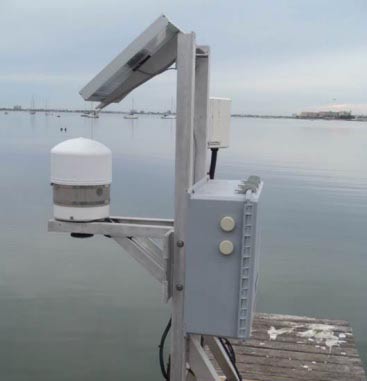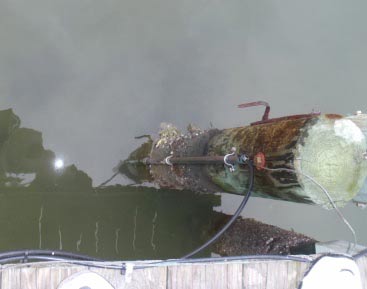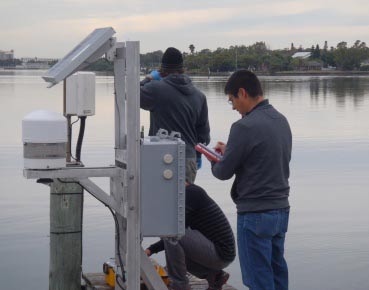Sea Level Rise Research
In Pinellas county, surrounded by Gulfport, St. Petersburg, and Boca Ciega Bay, lies a 170-acre estuary — Clam Bayou Nature Preserve. Due to urban development constructed prior to storm water monitoring regulations, the Clam Bayou habitat is now facing environmental repercussions affecting water level and quality.
Sensors: Simple and Accurate
To determine the level of impact the Bayou faces, the Coastal Ocean Monitoring and Prediction System (COMPS) installed a water monitoring site to collect data. In 2014, the COMPS system was upgraded with several Xylem brand instruments that can be used in the monitoring of sea level rise when surveyed in to a geodetic reference. The sensors include, a Nile non-contact radar level sensor, Amazon Bubbler, and YSI EXO2 Sonde.
“Many customers use the 6600V2 and EXO2 Sondes with depth, and some take the time to post-process their depth data to correct for barometric pressure changes,” described Xylem Analytics Senior Application Specialist, Mike Lizotte. “Even doing this, does not give them the water level accuracy provided by the YSI level products”. (Learn more, Water Quality Veteran Shares Memories and Leaves 40 Year Legacy).
The Amazon Bubbler—a compact combination of a bubbler and pressure sensor— has an improved controller and pressure regulator that uses a system of sensors and valves to regulate the bubble rate and purge pressure.
A simple purge feature, which helps keep sediment from settling around the orifice line by keeping the pressure at the desired level, makes the bubbler a big tool for monitoring at the estuary.
The non-contact Radar sensor provides a way to truth the data measured by the Bubbler. Its interface is compatible with any data logger that is SDI-12 compliant, and you can set the sensor to measure in feet, meters or any other engineering unit you want. The Radar sensor also contains a built-in LCD display for simple monitoring, setup and maintenance.
Together, the Bubbler, Radar, and EXO2 sensors add variety to the COMPS monitoring station and provide key data.
Site Challenge
Monitoring sea level rise and water quality—with the ability to accurately report water level data over the low current, continuous operation—is a key component in managing the Clam Bayou resources, but it isn’t without its challenges.
“A specific challenge we face with this site is the amount of hard fouling that occurs,” explains Lizotte. “I knew that the bubbler would have the same challenges, so… we came up with a method that is protecting the orifice tube from fouling by installing an anti-fouling protection pipe.” he added.
The lessons learned from the site, have produced numerous product enhancements that, in-turn, make work easier and the data quality higher for researchers.
Data Distribution
The COMPS commitment to monitoring provides vital data for environmental examination of Clam Bayou estuary, and aids in research conducted by the University of Southern Florida (USF), Florida Fish and Wildlife Conservation, and the USGS.
“The system has been operating flawlessly since October 28, 2014. “ Lizotte pointed out.
All three Xylem brand sensors can interface to the Storm 3 data logger or existing customer-owned data loggers using the SDI- 12 communications interface. Storm 3 can send data to a cloud-hosted data collection platform—giving researchers the capability to view, download, and share the data in real-time.
The ability to pinpoint data from any time range, and even filter the sensors on graphical and tabular displays, will also make the system a big tool for those relying on the site monitoring data for research.
The result of the latest xylem brand technology paired with monitoring efforts at the Clam Bayou site, will provide a greater understanding of environmental challenges, and produce vital data for future research.

Additional Blog Posts of Interest
Water Quality Monitoring Challenges | Tip 1 of 5
5 Tips to Prevents Costly Mistakes with Your Sondes | Tip 1 of 5
Water Quality Monitoring Technology Protects One Million People
Water Quality Measurements in the Sea Set the Stage for Outer Space